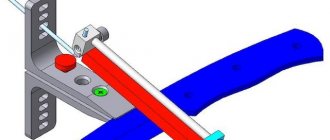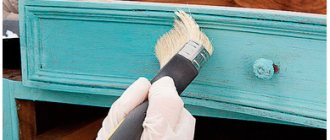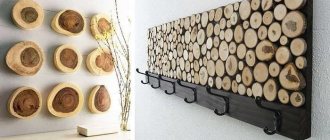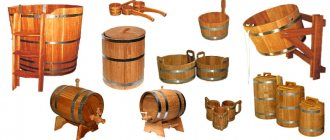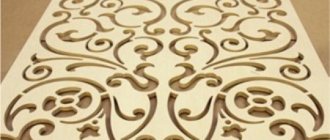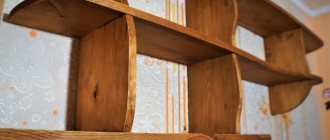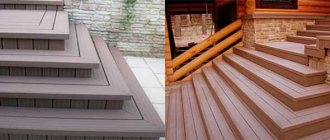Reversible screwdriver with two parts. handle, with attachments BISON PROFI 25352-H38
1033 ₽ More details
Set of screwdrivers with bits ZUBR Universal-27, in a case, 25027
1424 ₽ More details
BISON drills
When planning the construction of a new two-story house, you need to think about the construction of a staircase, which should be reliable, safe and aesthetically attractive. To achieve such a result, the material from which the structure will be formed plays an important role. Oak is considered the most durable and beautiful in design. He has rightfully occupied a leading position for many years. This elite material is used when decorating classic and non-traditional modern interiors.
Types of steps
Oak furniture and various wood accessories have never been considered cheap. This is explained by the complex preparatory process (drying and staining) of the workpieces. The result is a high quality product. Not everyone can afford to purchase oak products, however, the price does not count when the splendor and durability of the product are at stake. Therefore, when cladding flights of stairs, oak tiles are often used, guided precisely by their long service life. Oak steps last a long time without changing their positive characteristics.
There are 3 types of steps
Kinds:
- Solid. To create them, a whole piece of wood is used, and the structure of the wood pattern does not change. The main condition before installing the panels is that the wood must be kept for some time in the room where the adaptation work is supposed to be carried out.
- Solid lamella. Products are obtained by superimposing horizontal plates on top of each other. The pattern in this case is not lost.
- Spliced. The method is good if you need to create a very durable wooden structure. The method is based on merging several lamellas with tenons or grooves in the vertical direction. It is in demand when lining the treads of a flight of stairs.
Composition and types of steps
Steps are an element of a flight of stairs. Their horizontal upper part is called a tread and is used to install the foot, and the vertical part is a riser. There are several types of steps. Their choice depends on the type of staircase construction.
Features and photos of wooden stairs for the porch are presented in the table:
| Stair type | Peculiarities |
| Open - no risers | Such designs create a feeling of lightness and airiness of the staircase. |
| Closed - with risers | In the design, the steps are completely closed in height, which gives the staircase a monolithic and holistic look. |
| Direct private | These are standard steps, of the simplest form. |
| Zabezhnaya | Steps are used when it is necessary to ensure the rotation of the stairs; they have an uneven tread size. |
| Radial | Round steps in the form of a circle increasing in length relative to the central axis. |
Types of wood for steps
The aesthetic appearance of a wooden structure depends entirely on the type of wood involved in construction work. For the result to be pleasing to the eye, the tree must meet the following requirements:
- the surface of the elements must be uniform, without defects: cracks, areas damaged by beetles, knots;
- The moisture content of the wood should be no more than 12%. If the indicator is too high, the material should be thoroughly dried.
In this video you will learn how to make wooden steps:
Advice! In places with high loads, it is better to use blanks made from a single piece of wood or take laminated veneer lumber.
The following tree species are involved in the manufacture of products:
- steps made of pine - the hardness is not high, so they can be easily processed. After some time, yellow spots may appear on pine products. But this material can be easily found at an affordable price;
- birch – it produces fairly hard specimens. They serve for a very long time, but, as a rule, large pieces cannot be made from it due to the presence of defects and differences in shades;
- larch – the structure contains tannins, thanks to which larch steps do not deform, but the high cost does not allow the material to get ahead among its competitors;
- beech is a material with a beautiful pattern and color range, susceptible to the influence of ambient humidity. Beech stair treads are recommended for use in interior structures;
- ash - the plates are hard and bright. It is the flashy color that scares off many buyers;
- oak is the most suitable material for steps. Oak stairs are durable, very beautiful, but expensive.
Structural calculation algorithm
Currently, there are a large number of online calculators for calculating the parameters of stairs, but not everyone knows how to use them. In this article we will look at the basics of independently calculating all dimensions of a structure. What elements does the staircase consist of and what are the requirements for them?
Table. Components of a standard staircase.
| Item name | Purpose and brief description of requirements |
| Bowstrings | The boards supporting the steps at the ends are most often fixed to the walls and have special recesses for fixation. |
| Stringers | Strong beams that support the steps. The lower plane of the steps rests on the cut-out horizontal platforms in these beams. |
| Vertical stand | A support post used in screw structures. All steps are attached to the rack on one side, so it carries maximum loads. Made from thick wooden beams or rolled metal. |
| Step | The main structural element can be made of boards or metal. The minimum width must allow two people to pass in opposite directions. A length of at least 80 cm is recommended. The depth of the step is within 25 cm. |
| Riser | Supports the step in a vertical position, hides the joints, and performs a decorative function. Riser height ≈ 17 cm. |
| Railings and handrails | They increase the safety of movement and are designed for maximum lateral forces (at least 150 kg). Recommended height 100 cm. |
| landing | Placed only on rotary staircases, it allows you to rest and change the direction of movement. |
| Columns | The ends of the railings are fixed to them and are made of stronger materials than railings. |
Elements of a flight of stairs
When calculating the dimensions of the stairs, you must use the recommended initial data.
- tilt angle 30–50°;
- riser height 15–20 cm;
- railing height 90–120 cm;
- The width of the boards for steps is 22–30 cm.
Basic parameters of stairs
There are specific features when calculating stairs installed in attic spans. It is necessary to take into account the requirements for the distance between the head of the climber and the ceiling. If this parameter is not observed, then two negative consequences are possible: a head injury on the edge of the flight or constant bending for fear of getting such damage.
Calculation of steps for stairs
Calculation of stair steps
The flight of stairs is calculated based on the average step length of a person. There are certain formulas for carrying out calculations that can be used to calculate the height and depth of a march element. But there is one rule - when walking, a person must place 1/3 of his foot on the tread of the march. The generally accepted depth should be 20-30 centimeters. A smaller size will make going down the stairs much more difficult.
In their home, when building stairs, they resort to the following trick - they take the shoes of all household members, calculate the average length and, by adding 2 centimeters, get the depth of the tread. If the calculation led to a small depth (in the case of a steep staircase), then it is possible to provide an overlap on the steps, which will prevent the foot from sliding and prevent a person from falling on the stairs.
This is interesting: the optimal height of steps.
Instructions for making an entrance staircase
The structure will be placed outdoors and exposed to negative climatic influences, and therefore it is necessary to use all possible measures to increase its service life. To carry out the work you need a portable circular saw, a screwdriver and measuring tools.
Tools for work
Important. All lumber must be impregnated with antiseptics at least twice. It is necessary to impregnate not only the side planes of the boards, but also the ends.
This is where the most water is absorbed, and it penetrates very deeply. The fact is that after drying, lumber does not absorb water into the cells, but only into the intercellular space, while all the pores are located at the end. After sawing into parts, the impregnated board must again be treated with an antiseptic at the ends, otherwise the effect of incomplete protection will be minimal.
Rules for processing wooden stairs
Step 1. Measure the height of the stairs. In order for it to be comfortable to walk on the stairs, the step step should be within 15–20 cm. Our staircase height is 90 cm, it is better to make 6 steps of 15 cm each. If a whole number does not work out, then the height of the first one must be changed and adjusted to the general ones options. The optimal step depth is 27 cm.
Work begins with measuring the height
Step 2. Mark out wedges on the board to support the steps of the stairs. The fact is that our design will be temporary; the staircase must be made quickly and with minimal loss of materials and time. On a 150x50 mm board, mark triangles, one leg 15 cm long, the other 27 cm. Mark using a construction square. You will need 12 such parts. - two for each step.
Marking wedges on the board
Step 3. File the triangles, use the first one as a template.
Using the first piece as a template, cut the remaining wedges
Step 4. Screw the stop triangles onto the string. Before doing this, do not forget to saturate the fresh cut surfaces of the board. For fixation, use long screws or nails; both types of hardware perfectly hold the load on the stairs.
The resulting wedges are screwed with self-tapping screws to the edge of the board.
Sha 5. Adjust the bottom of the bowstring to rest on the ground. It's easy to do. We must remember that all steps must be located strictly in a horizontal plane, and the cut must have the same position. Make it parallel to the steps, then it lies flat on the ground, and the steps will be horizontal.
Mark a cut at the bottom of the bowstring
Step 6. Measure where you want to cut the top of the string. Here the algorithm of actions is different. The cut should be parallel not to the step, but to the riser. Draw a line and cut the board using this rule.
Mark a cut line at the top of the string
Step 7. Attach the strings to the object, the distance between them is at least 80 cm. Saw the boards for the steps and nail them to the stops. The simplest staircase is ready.
Screw the strings to the base and fill the steps
This is a very durable design and requires minimal time to manufacture. Only 12 pieces can be considered unproductive losses. small squares, all the rest of the lumber after dismantling the structure can be used in the construction of the house.
Geometric parameters of steps
As you know, all objects are measured by basic parameters: length, width and height. Wood steps are no exception:
- height – accepted in the range from 15 to 22 centimeters;
- depth - the horizontal part on which a person rests his foot;
- width - the distance between the two edges of the flight of stairs;
- The thickness of the riser and tread is at least 25 and 35 mm, respectively.
Attention! The size of the tread depth can vary in turning and spiral staircase models. This way, each family member can choose which side is better to go up or down.
Based on the data obtained, the angle of inclination of the staircase with the number of treads is determined.
Optimal slope of the stairs
The inclination of the staircase design affects how much space it will take up in the room. If the room is huge, you can freely install a large staircase with a wide flight of stairs. In small rooms the rise is steeper.
For ease of movement, the slope is taken to be from 23 to 37 degrees. When the number is less than 23, the span is easily replaced with a ramp - a flat surface connecting two others at different heights.
The slope should not be less than 23 degrees
Calculation of the number of steps in a march
To determine the number of steps required for a climb, you need to measure the height of the floor (rise) and divide by the height of the proposed wooden step for the stairs. If there is a turntable, two calculations are performed with two lifting heights: from the floor to the platform and after it - to the next floor. The thickness of the floor on the next floor must be taken into account.
Wooden steps can be determined graphically. This method involves the use of graph paper, onto which a flight of stairs is transferred to scale. Using special safety formulas and the height of the room, the depth of the tread is determined. The remaining wooden steps are taken according to the obtained dimensions.
This is interesting: how to make calculations for stairs using a constructor?
Manufacturing stages
Assembling a staircase consists of several stages, each of which is very important.
- Design and calculation. Depending on the specific tasks and location of the staircase, its type is selected and engineering calculations are performed. We will go into more detail at this stage below; it plays a decisive role.
- Selection and purchase of materials. It is necessary to determine not only the type of wood, but also the linear dimensions and the total amount of lumber. At the same time, you should buy elements for additional decor and hardware.
- Preparation of elements. These works have differences associated with the design features of the staircase. One system is used to prepare parts for a propeller, and a completely different one for a sustainer.
- Assembly of the structure. The staircase is assembled according to a specific algorithm; it has no unnecessary elements. Each node is very important and if its stability is violated, the entire structure suffers.
- Final finishing. The surface of a wooden staircase is covered with various impregnations, varnishes or paints. Such coatings perform two tasks: they increase the service life and improve the appearance of the structure.
The key stage is designing the structure.
Before studying the instructions for making stairs themselves, you need to familiarize yourself with the theoretical part.
Installing wooden steps on a metal staircase
Holes are drilled in the metal frame of the stairs every 15 centimeters. Make an indent of 2 centimeters from the edge. Wooden steps made of oak or other wood will be attached to these holes. During the welding process of metal elements of a flight of stairs, some inaccuracies may occur, resulting in height differences. Such defects can be easily corrected by gluing the backing onto the frame, which can be plywood.
To securely fix the substrate, use self-tapping screws. To brighten up the cold metal, wooden steps are made with a protrusion.
Preparation of material
Before making wooden steps for the porch, you need to choose the right material.
When choosing a material, you need to pay attention to coniferous wood (pine or spruce). But to make the staircase design more reliable, it is necessary to give preference to such types of coniferous wood as larch and cedar. These materials are not subject to rotting and swelling, so a staircase made of cedar and larch will last a long time without repair.
If you bought material with natural humidity, then it becomes necessary to carefully prepare :
The material is dried well in a dry room with good ventilation. This may take some time. Lumber usually dries within 3-4 months;- You can also buy boards for stairs and steps already prepared, that is, they have been processed in special chambers;
- To check the condition of the tree, use shavings. In wood that has dried well, the shavings break without bending;
- To protect wood, special compounds are used against rotting and fungus.
Buy ready-made steps in Petrovich =>>
To build steps to the porch, you need to first prepare the following tools:
- grinding machine;
- electric plane;
- a circular saw;
- pencil;
- ruler.
The thickness of the boards for steps should be from 30 to 40 millimeters.
Installing wooden steps on concrete stairs
Almost any structure made of concrete does not shine with beauty, so they try to cover it with another, more elegant material. Wooden steps made of oak or other types of wood look very impressive, although they require considerable investment. Cladding work should only be carried out on dry concrete, otherwise the wooden steps may become deformed from absorbed moisture. The horizontalness of the surfaces is carefully checked using a building level. If necessary, a screed or plywood backing is provided.
Upon completion of the preparatory work, you can install wooden steps:
- The installation procedure begins with the bottom riser. The first step is to securely fasten it to the floor; to do this, two self-tapping screws must be screwed into the end of the tile. Their caps are trimmed.
- Then holes are made in the floor for self-tapping screws and filled with glue.
- Risers are inserted into the prepared places.
- Glue is applied to the horizontal part of the march and treads are placed.
- You need to put a weight on top.
Basic staircase designs
There are a huge number of types of stairs, but they are all divided into several large groups.
- By appointment. They can be outdoors at entrances, between floors, purely functional or design.
- By design. There are many varieties: folding, spiral, simple, marching. Additionally, they are divided into straight steps and those with winder corner steps, with and without landings.
- Depending on the installation location - outdoor or indoor.
Types of wooden stairs
Practical advice. Before starting work, you need to accurately determine the type of staircase, make all the calculations and buy the required amount of materials.
Drawing a drawing of a staircase
How to make steps from wood with your own hands
To do the work yourself, it is advisable to have the following tools on hand: an electric saw and plane, a grinder and a milling machine for processing the edges of wooden tiles. On rotary structures of a flight of stairs, individual tread elements are prepared according to a template and treated with a protective compound. The steps are secured to wooden stringers or bowstrings using nails or glue. After completion of the work, the junction of the march and the walls are covered with a plinth.
A detailed description of how to make wooden steps, namely steps from a terrace board, is presented on our website.
Installation of a wooden porch in 2 options
As already mentioned, it is better for amateurs to make a staircase on stringers or bowstrings, but in addition to assembly and finishing, there is also such an important point as the foundation for a wooden porch, and that’s where we’ll start.
Foundation for a wooden porch
It is easiest to install a porch under a wooden house. You need to arrange a support platform on the ground, and the porch, or rather the stringers or bowstrings, are attached directly to the wooden house with special canopies.
I recommend pouring a small reinforced concrete slab as a support platform.
- According to the size of the slab, a small pit is dug and immediately compacted to a depth of 30 cm.
- The bottom of the pit is covered with roofing felt or geotextile.
- Next, a sand and gravel cushion is filled in and compacted at a depth of 200 mm.
- A small formwork is constructed on top; the slab will be poured 50 - 100 mm above the ground.
- Now a cage of metal reinforcement is placed on the cushion and concrete is poured, and when the solution hardens, all you have to do is remove the formwork.
The reinforced concrete slab holds up well on any soil, including heaving soils and peat bogs.
With fastening to the wooden house itself, everything is simple, previously the stringers cut directly into the frame of the house, now this is not necessary. There are metal hangers on the market for arranging the rafter system; with their help, supporting structures are screwed to the house quickly and reliably. By the way, the porch can also be attached to concrete with hangers.
Metal hangers will save you a lot of time without losing the quality of fixation
But if the house is new and is still shrinking or there is no way to pour a reinforced concrete slab, then the porch is placed on bored concrete piles. Filling them with your own hands is not difficult.
- Take a garden drill and make holes at the reference points. The depth depends on the type of soil; on dense soils, half a meter is enough, and on heaving soils, the hole is drilled just below the freezing level.
- Next, pour a sand and gravel cushion into the hole to a depth of 100 - 150 mm.
- Make a pipe from roofing felt and insert it into the hole.
- Insert a reinforcement cage into the pipe and fill everything with concrete.
- After pouring, raise the pipe by 100 mm to expand the support base.
Important! A threaded pin is either inserted into the bored pile, or reinforcement is brought up to fix the porch structures.
Bored piles are suitable for any soil, the main thing is to correctly determine the laying depth
Option #1. Staircase on stringers
Do-it-yourself steps for a wooden porch are easier to install on stringers.
- You need to take two or more wide boards with a thickness of 40 mm and mark them for future steps.
- Next, take a hacksaw and cut out the bed for the steps.
- After installing the stringers level and fixing them to the base, all you have to do is cut the treads with risers and screw them to the stringers.
Instructions for assembling stairs on stringers
Option #2. Ladder on bowstrings
Installing a ladder on bowstrings is also not very difficult. The entire preparatory stage and calculations remain the same, only the principle of fixing the treads and risers on strings changes, there are 3 main methods.
- The easiest way is to screw thick bars to the strings and put treads on them, but this option is good if you plan to install risers; the bars look ugly on open structures.
- It is much more convenient to assemble a staircase on metal corners, however, for a street staircase you need stainless steel corners, and their price is not the lowest.
- Professionals prefer to cut grooves in the strings and install treads and risers in them. To do this you will need a hand cutter; cutting with a hacksaw and chisel looks rough. The treads themselves are fixed with self-tapping screws through the string
Options for attaching treads to a string
Finishing a wooden porch
Finishing a wooden porch begins at the wood harvesting stage. If you want the porch to stand for at least 20 years, then it is better to take a board with deep vacuum impregnation. The price for such material is 2 times higher than for ordinary wood, but it is worth it.
If for some reason you had to build a porch from ordinary dry or freshly cut wood, then first cut it to size, plan and lightly sand all the elements, and then treat them a couple of times with a complex protective compound.
Protective impregnation is applied to wood at least 2 – 3 times
Advice! There are tips online to saturate the wood with used machine oil, but under no circumstances should you try to do this. Despite the fact that the porch is located on the street, the smell of machine oil will last for several years.
When the wood has dried after complex impregnation, a final fine sanding is carried out and you can proceed to applying decor. If you are working with coniferous species, then after sanding the wood still needs to be bleached (the resin is washed off).
Decor is a delicate matter; the easiest way is to paint the porch with some covering paint for exterior use, but in this case you will hide all the beauty of natural wood.
After bleaching, wood and light-colored species can be tinted with stains; they are inexpensive and there is quite a large selection.
Wood stain can be used to make wood darker, but not lighter.
For adherents of environmentally friendly coatings, oil-wax is now sold, if you don’t trust industrial compounds, then you can make such impregnation yourself, the recipes are “HERE” . But keep in mind that you will have to renew the oil-wax every year, because the beauty and protection will last a couple of years at most.
If you want the porch to look beautiful and the coating to last a long time, you will have to fork out for a good yacht (alkyd-urethane) varnish. These compounds can even withstand sea water, so you don’t have to worry about the porch here.
On the porch, waterproof yacht varnish will last at least 3 - 4 years, without updating
Important! Whatever finishing composition you choose, it is applied to the wood at least 2 times with a break for drying.
Treatment of steps with protective agents
Steps made of larch or oak are quite resistant to external influences. But there are several techniques that can further improve the protective properties of the material. Oak steps can be varnished. This adds shine and prevents minor scratches on the surface. Temperature changes and humidity have a negative impact on wooden steps; they can become deformed. Varnishing the surface eliminates such a nuisance.
It is better to use polyurethane mixtures as varnish, which can withstand significant damage. The varnish is applied in three layers, but first a primer is applied.
The next operation to extend the life of the product is wood impregnation. At the stage of selling wooden products, no one can say for sure in what conditions they will be used: in dry places with high loads or wet conditions.
Positive effects of impregnation:
- creates a surface wear-resistant layer and improves the performance of wood (not so important for steps made of larch and oak);
- reduces the sensitivity of the material to ultraviolet radiation - paints and varnishes last a long time and do not fade;
- improves the moisture resistance of wood.
Advice! A board treated with paint and varnish coatings and various impregnations does not allow air to pass through it well, so unpleasant odors will accumulate in the room more quickly. This drawback can be eliminated by good ventilation of the room.
Instructions for making a flight of stairs indoors
Having a little practical experience in making the simplest stairs, you can move on to more complex projects. Our staircase will be located on the landing and will lead to the second floor of the house.
Calculation of a straight staircase
The height of the platform is 35 cm, for it you need to make one step from the floor, the platform itself will be the second. The bowstring is made from 50x200 mm boards; buy lumber of at least first grade. To improve the cleanliness of the surface, sand them with a cylindrical grinder (grinder) with a rubber disc with Velcro. Sanding cloths with different grain sizes are glued to it in turn.
Step 1. Mark the bowstring. This is a very important process, and although there is nothing particularly difficult, mistakes should not be made under any circumstances. Place the board in place of the ladder. At the bottom end, use a bubble level to draw a horizontal line from the top corner of the board. With this surface the bowstring will rest against the platform. At the top, draw a vertical line from the far corner of the board. The cut rests against the vertical plane of the entrance hole of the second floor.
The string is screwed to the wall and markings are made
Practical advice. If the length of the cut exceeds the thickness of the ceiling, then it must be shortened so that all architectural elements are located in the same plane.
Step 2. We have a planned step pitch of 135 mm, we need to make markings on the boards taking this parameter into account. In theory, it is required to measure each step in height and thickness, and mark it using a ruler and square. This is long and difficult, in addition, beginners can make a mistake at this stage, and this will cause incorrect marking of the entire bowstring. In the best case, you will have to make new markings, and in the worst case, if the recesses for the steps are made, you will have to look for a new board.
Marking the steps
Experienced builders strongly advise preparing two templates from scrap boards. One is 135 mm wide, with its help the positions of the lower plane of the steps are marked. The second template is 50 mm wide, these are the dimensions the steps will have, this template fixes their parameters. Having templates, it is enough to mark only one lower step, and the templates are used to mark all the remaining ones.
Sections of boards are used as templates
Step 3. Make cuts under the steps. To do this, place the bowstring on a flat platform, its height is approximately 1 m; it is convenient to work in this position. Set the cutting depth with the saw, in our case it is 1.5 cm; the width of the platforms is sufficient to securely stop the step. A slight reduction in the thickness of the board does not have a critical effect on the load-bearing capacity of the bowstring. First, cut lines along the width of the step, and then make a few more passes inside the outline to make it easier to remove the wood.
Grooves are cut according to the markings
Important. When operating a circular saw, follow safety precautions and never remove the protective metal casing. It slightly interferes during work, but ensures the safety of the master.
Step 4. Use a hammer and chisel to remove the wood and level the areas. You can try to do this with a saw, but professionals do not recommend such experiments. Why? During lateral movements of the saw, the edges of the seats are damaged, and gaps appear between the step board and the string. This not only significantly worsens the appearance of the staircase, which is bad, but also reduces its stability, which is very bad. It’s better to work slowly with a chisel, acquire skills, they will always be useful in life.
It is convenient to select wood from the grooves using a hammer and chisel
Step 5. Attach two boards mirror to each other and mark the location of the steps on the second one. Make sure that they do not move, constantly check all dimensions, draw lines at the points. Repeat all the above operations for making technological platforms on the second string. Drill two through holes in the seats - this makes it much easier to tighten the screws, and the fixation strength does not change.
A second string is made, after which holes for fasteners are drilled
Step 6: Prepare the steps. For convenience and beauty, it is advisable to make a small overhang; in our case it is 6.5 cm; by this size the step protrudes beyond the bowstring. Check how the parts are connected and correct problem areas if necessary. Everything is fine - start assembling the stairs.
Check how the steps fit into the grooves
Assembly of the structure
The ladder is small, you can assemble it on the ground, it is much simpler, easier and faster.
Step 1. At each step, mark the offset, taking this size into account, insert them into the seats of the bowstring. Screw the parts with self-tapping screws. Constantly check the corners of the stairs, they should all be straight. If you made the blanks without violating the recommended technology, then there will be no deviations.
Insert the steps and fix them with self-tapping screws
Step 2. Place a baluster on each step and secure it at the bottom with self-tapping screws. If they deviate slightly from the right angle, then this is not considered a problem. The situation will be corrected during the installation of the railing (handrail). Before this, the upper ends of the balusters must be cut at an angle; it must be exactly the same as the angle of the bowstring. Make the markings using a bubble level.
A baluster is attached to each step
Step 3. Attach the handrail, constantly monitor the position of the balusters. They must be strictly parallel. For fixation, use self-tapping screws with countersunk heads; holes must first be drilled in the parts.
The last thing to install is the handrail
Now the ladder is completely assembled, it can be lifted and fixed in the right place. The lower and upper sections are screwed to the ceiling and platform. The string is nailed to the wall.
The finished structure is installed in its place
Video - DIY wooden staircase
The space under the stairs is often left free. Modern designers consider this use of living space ineffective and advise installing various pieces of furniture under the steps. An excellent solution is to install a bookcase. Everything is within easy access; a coffee table with chairs can be placed next to the shelves - there is a home library. You can read how to make a beautiful and functional shelving on the pages of our website.
Cladding of stairs and how it affects the durability of structures
Each of the presented materials has positive and negative aspects, but often there is no need to talk about the durability and practicality of structures due to the absence or insufficient quality of the cladding. Metal steps, for example, without cladding make a lot of noise, causing a lot of unpleasant moments, and concrete, even the highest quality, without finishing, quickly collapses under the influence of precipitation and temperature changes.
Parts should be treated to protect against negative factors. First of all, the wood is treated with antifungal (aniseptic) impregnation, after which it is allowed to dry. When the wood dries, it is treated with a primer (aquastop) and dried again. At the final stage, the wood is coated with varnish or special paint. Varnish looks more beautiful, but paint requires less attention and maintenance during operation.
Preparatory work
Calculation of the slope of the march.
If you wish, you can make a cozy veranda or terrace instead of a porch where you can relax. This will become a kind of transitional room between the house and the street.
When drawing up drawings, it should be remembered that the dimensions of an object are determined based on capabilities (both financial and physical), and not standards (which do not exist). The shape and type of structure depend on taste and landscaping rather than any other factors.
It is worth noting that some dimensions for the design still need to be maintained. For example, centuries of experience have proven that the height of the step should not exceed 18-20 cm, and the width of the step (step) should be within 30 cm. If the height of the steps is greater than the given one and the width is less, then inconvenience may arise during operation .
Installation of stands for the site.
Next, when the drawings are created, the material should be purchased. Boards, timber and other wooden materials must be purchased with a minimum 10% reserve, since some of the material will be lost during “cutting”; the dimensions of the boards and timber are determined by the drawings. When all the necessary materials have been purchased, they are cut into parts (supports, bowstring/stringers, steps, etc.).
Parts should be treated to protect against negative factors. First of all, the wood is treated with antifungal (aniseptic) impregnation, after which it is allowed to dry. When the wood dries, it is treated with a primer (aquastop) and dried again. At the final stage, the wood is coated with varnish or special paint. Varnish looks more beautiful, but paint requires less attention and maintenance during operation.
If the building has been erected, but you are not satisfied with the existing option of wooden steps, carefully consider all the details before starting work. It's easy to destroy what you have. It's more difficult to create. Pay attention to the fastenings and the presence of a foundation. You may find it necessary to open up the yard cover and remove built-in supports.
